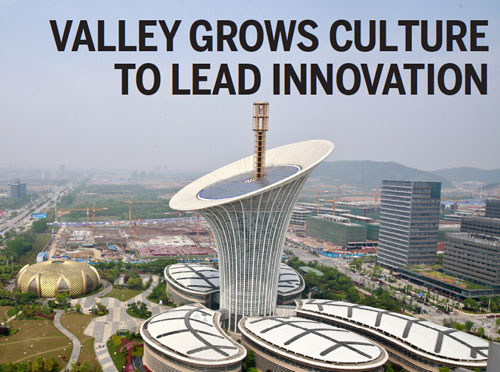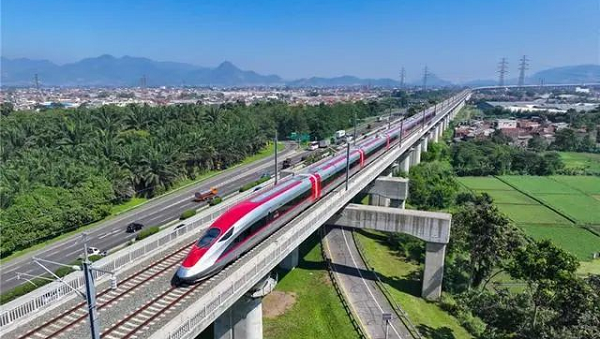Valley grows culture to lead innovation
Editor's note: As the Chinese economy enters the new normal with its growth rate slowing, innovation has been placed at a core position in China’s overall development. China Daily recently interviewed people involved with a leading State-level innovation pilot zone, Optics Valley of China in Wuhan city. This series of reports will use the valley’s case as an example of what China has done to boost innovation and the difficulties and challenges faced.
When Wang Hui submitted a job application to a government office in Wuhan, he did not expect to be interviewed by a panel comprised solely of internet company managers.
No officials from the Wuhan East Lake High-tech Development Zone, or Optics Valley of China, which oversees the office, were present at the interview.
The post Wang applied for was with the Development Office of Internet Plus Industry, whose roles and responsibilities include making development plans and policies for the industry, building an industry base and supporting companies and major projects.
Wang answered mostly job-related questions regarding his understanding and interest in the internet industry, innovation and also about how to support companies.
What was more surprising to him, he said, was that the office engaged companies related to the concept of Internet Plus to determine what would be the office’s major tasks.
“I think the government wants to understand and serve the industry and therefore hopes to recruit staff who know the companies best,” said Wang, 36, a graduate of Wuhan University.
“Engaging company bosses in the key interview process is very practical and democratic.”
Authorities in Optics Valley did not initially plan to consign the decision-making to internet companies but thought they would draft a development plan and industry guideline themselves.
They clashed over differing ideas and finally decided “the office should not be ruled by government and that companies should play the key roles.”
Innovate development
The innovative change in the setting up of the office is not an isolated case in Optics Valley.
In the past 30 years, since 1985 when what was to become the valley was only a street where more than 100 privately owned companies converged, it has applied favorable policies and bold ideas to build itself an exemplary case for how China could adapt to changing economic scenarios.
In 1988, at a time when China was forging ahead with its reform and opening-up, the Wuhan East Lake High-tech Development Zone was established in the city renowned for steel production that started as early as 1890, and which cradled China’s first giant steel conglomerate in 1955.
The zone developed into a State-level base for the optics industry in 2001, when traditional industry witnessed the first round of massive layoffs of workers across China.
Following the 2008 global financial crisis and consequent drop in global demand for China’s primary and secondary industry products, the importance of the zone was further boosted in 2009 when it became the second innovation demonstration zone for China.
The zone currently covers an area of 518 square kilometers and bears a new mission to lead change for innovation-driven development.
“We spent about 30 years to find our direction and the positioning of the zone and Optics Valley,” said Dan Changchun, standing deputy-director of Wuhan East Lake High-tech Development Zone.
“We focus on optics, but more importantly, enhancing the concept of a ‘valley’,” Dan said, adding more efforts would be devoted to renovating the system and creating an effect that is favorable for innovation and business startups.
Relying on the world’s largest number of students receiving higher education, 1.18 million, Wuhan provides Optics Valley the edge to host over 30,000 companies, with about 100 Fortune 500 companies.
The convergence of the intelligence and high-tech industries is creating a promising economic prospect for the city that could be expected to offset negative effects from withering traditional industry such as consistent oversupply of steel and overcapacity of steel production.
In 2015, corporate revenue in Optics Valley reached 1 trillion yuan ($153 billion), an increase of 18 percent from last year.
Of that total, the pillar stone of the zone, the optics industry, including optical fiber cable and transmission businesses, contributed 442 billion yuan. Other industries also saw double digit growth annually, including the biological industry that contributed 80.2 billion yuan, new energy and environmental protection (107.1 billion yuan), high-end equipment production (115.6 billion yuan) and the modern service industry (212 billion yuan).
Optics Valley applied for over 16,000 patents in 2015, more than three times its number of applications in 2010.
“The vision of the valley is to build itself into a first class high-tech zone, create a center for innovation and startups of global influence and reach our goal that ‘the US has Silicon Valley and China has Optics Valley’,” says the official development plan.
Culture matters
According to Dan, Optics Valley has devoted resources to improve the software and hardware of the zone.
“But when we talk about favorable policies, our innovative and free systems and environment, our competitive infrastructure and services, we are actually talking about the culture of the zone.”
Dan said the “culture of the valley is its core competitiveness, a differentiator and what sustains development”.
“Without culture, the development plans would have no support and wouldn’t last long. Culture can support the term of a city’s development,” he said.
The deputy director summarizes the zone’s culture as “an adventurous spirit, innovation-driven, simplification, openness and flexibility.”
Dan said the zone encourages “culture shock” to bring fresh blood to the old system.
Culture shock can break old shackles, he said.
Dan gave an example of a team of public servants who used to object to outsiders entering its world and lacked the spirit of adventure to take risks and innovate because it was stable. Optics Valley has applied a system that requires all administrative staff, except high-ranking ones, to be on contracts rather than permanently registered as official public servants.
He said culture shock could also enlighten and enrich established systems.
The zone provides favorable policies and infrastructure to attract internationally leading companies to stay and one key reason is to learn from their culture from outside, he said.
“For example, we built an office building for the use of giant pharmaceutical company Pfizer, who will probably not contribute any tax revenue during my tenure. But what Pfizer brought to us is its concept.”
Dan said he was surprised that when the global head of the company visited in 2010, he did not begin his speech by extending thankful words to local official leaders but by expressing gratitude — including bowing — to construction workers who finished the project beautifully and without accidents.
“This is a human-oriented culture. We can’t win the world’s respect with our official doctrines,” Dan said.

Calla Lily, the landmark building of the Optics Valley host the New Energy Reserch Institute of Wuhan. PHOTOS BY FENG YONGBIN / CHINA DAILY
Contact the writers through wanghuazhong@chinadaily.com.cn




